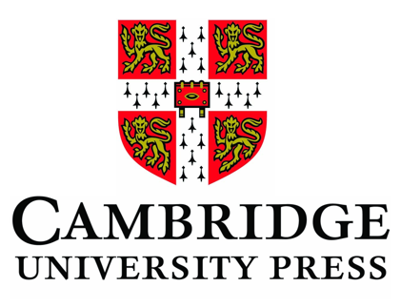Location
Cambridge University Press is part of the University of Cambridge. Our mission is to unlock people’s potential with the best learning and research solutions. Our vision is a world of learning and research inspired by Cambridge.
Our peer-reviewed publishing lists comprise over 53,000 titles covering academic research, professional development, over 350 research journals, school-level education, English language teaching and Bible publishing. This list is growing every year and spans subjects from aesthetics through to zoology, with authors ranging from Shakespeare to English language teaching author, Ray Murphy.
A pioneer in our field, we are committed to supporting innovation in learning and teaching. We publish without boundaries, ensuring our resources are accessible across the globe, in print, online and other digital formats.
We take pride in supporting community programmes across the globe. Staff are encouraged to offer practical help, advice and funding to nurture vital charitable, educational and voluntary partnerships.
Playing a leading role in today's global market place, we have over 50 offices around the globe, and distribute our products to nearly every country in the world. We publish 50,000 authors based in over 100 different countries.
Members:
Resources
Displaying 61 - 65 of 81Evaluating the environmental impact of payments for ecosystem services in Coatepec (Mexico) using remote sensing and on-site interviews
Over the last decade, hundreds of payments for ecosystem services (PES) programmes have been initiated around the world, but evidence of their environmental benefits remains limited. In this study, two PES programmes operating in the municipality of Coatepec (Mexico) were evaluated to assess their effectiveness in protecting the region's endangered upland forests. Landsat satellite data were analysed to assess changes in forest cover before and after programme implementation using a difference-in-differences estimator.
Mangrove ecosystem services and the potential for carbon revenue programmes in Solomon Islands
Mangroves are an imperilled biome whose protection and restoration through payments for ecosystem services (PES) can contribute to improved livelihoods, climate mitigation and adaptation. Interviews with resource users in three Solomon Islands villages suggest a strong reliance upon mangrove goods for subsistence and cash, particularly for firewood, food and building materials. Village-derived economic data indicates a minimum annual subsistence value from mangroves of US$ 345â1501 per household.
Obstacles and options for the design and implementation of payment schemes for ecosystem services provided through farm trees in Saxony, Germany
Agricultural crops and pasturelands cover 24â38% of the global land area, and thus the ecological services that agricultural systems provide are of utmost societal importance. An important determinant of ecosystem services provision from European farmland is the amount and spatial arrangement of trees, shrubs and woodlands that are integrated into the respective land-use systems.
Habitat loss and humanâelephant conflict in Assam, India: does a critical threshold exist?
Humanâelephant conflict in India, driven by habitat loss and an expanding human population, is a complex challenge for biodiversity conservation. Determining if, how and why this conflict has changed over time will be an important step towards managing landscapes where people and elephants Elephas maximus coexist. This study combines social surveys and remote sensing data to analyse patterns in humanâelephant conflict and land-use change over time.
Paying the forest for electricity: a modelling framework to market forest conservation as payment for ecosystem services benefiting hydropower generation
The operation and longevity of hydropower dams are often negatively impacted by sedimentation. Forest conservation can reduce soil erosion, and therefore efforts to maintain upstream forest cover within a watershed contribute to the economic life span of a hydropower facility. The cost of forest conservation can be viewed as an investment in hydropower and be financed via a payment for ecosystem services (PES) scheme.


